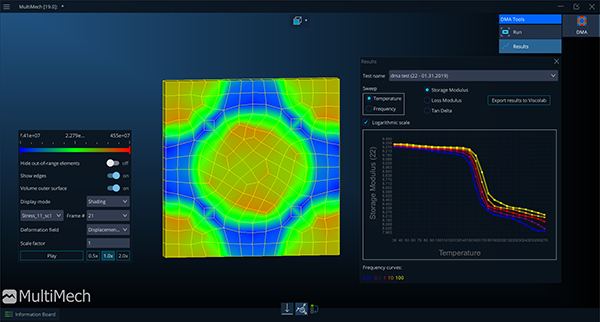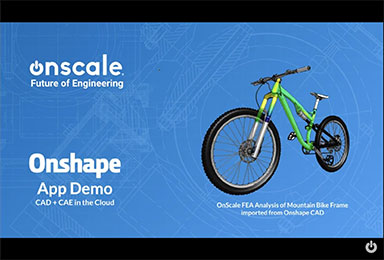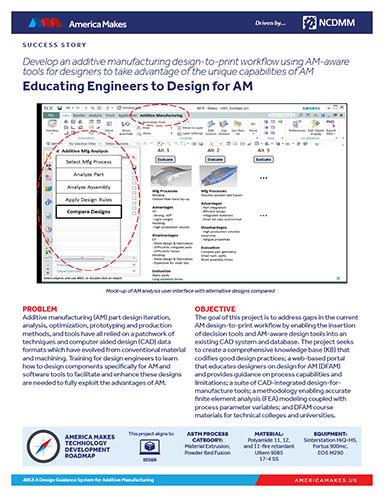Editor’s Pick: Faster Composites Simulation Improves Predicting Carbon Fiber Performance
MultiMechanics MultiMech 19.0 composite simulation software specializes in finite element analysis of carbon fiber and other composites.

New Virtual DMA (dynamic mechanical analyzer) feature in MultiMech 19.0 allows users to characterize the behavior of complex microstructures. Image courtesy of MultiMechanics.
Latest in Finite Element Analysis FEA
Finite Element Analysis FEA Resources


Latest News
May 1, 2019
Dear DE Reader:
When Egypt’s Pharaoh punished his Hebrew slaves by telling them to find their own straw to make his bricks, it may have been the first time in recorded history composites became a matter of widespread public interest. The Hebrews didn’t need simulation software to know bricks suck if you don’t use straw, but today we have more sophisticated needs. Composites raise performance levels, offer ways to get around traditional design limitations and enable new products and variations. It is a fast-moving field; engineering technology has to keep up with the rapid pace of composite innovation.
MultiMechanics specializes in composite modeling and simulation software. They just released an update of MultiMech, which includes many new “must-have” features for keeping up with this fast-paced aspect of product development. It is why we have selected MultiMechanics MultiMech 19.0 as our Editor’s Pick of the Week.
MultiMechanics is a relative newcomer in simulation, founded in 2010 to bring new speed and accuracy to predicting failure rates in advanced materials. One of its first projects was helping the U.S. Army Research Laboratory explore impact applications, which led to their commercial product for exploring how composites behave under extreme conditions. MultiMech does multiscale FEA to help companies virtually predict failure in advanced materials faster than possible with other solutions.
The behavior of carbon fiber composites is notoriously hard to predict. Not only do carbon fibers exhibit nonlinear behaviors at small deformations, their tension and compression mechanical properties are unlike other materials. This update features a new bi-modulus elastic model, to make it easier for engineers to realistically predict carbon fibermechanical behavior.
Models are important, and so is raw speed. MultiMechanics says their solver is 1.5 times faster than the previous version. Also boosting the total speed of simulation is the new ability to conduct parallel runs in their Optimizer module.
MultiMechanics has redesigned the material database in line with the solver improvements, which also speeds the workflow. Users can now create their own database of material cards to be used with MultiMech. These material cards include material definitions for individual constituents, and can also define an entire Representative Volume Element as an entry to the material database. MultiMechanics says this redesign makes it easy to create, import, export and share a material database with other users in the organization.
Thanks for reading; we’ll be back next week with another Editor’s Pick of the Week.
—DE Editors
More MultiMechanics Coverage
Subscribe to our FREE magazine, FREE email newsletters or both!
Latest News
About the Author
DE’s editors contribute news and new product announcements to Digital Engineering.
Press releases may be sent to them via DE-Editors@digitaleng.news.




